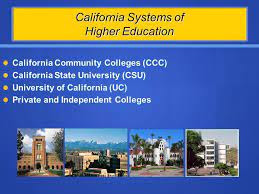Hey Gavin Newsome,, Why Are California Universities Struggling To Graduate Black Students?
Leila
Cormier’s breath quickened and her mind raced as she prepared to lead her first workshop at Sacramento State’s resource center for Black students. Surrounded by 25 students, paint and dirt, she wanted to overcome her fear of public speaking and develop skills for her post-graduation goal of changing public policy.
Cormier is a fourth-year political science major and Africana studies minor who has been heavily involved in Sac State’s Martin Luther King Jr. Center.
The workshop combined two of her passions: mental health and plants. Students wrote affirmations like “I get good grades” or “I am enough” on compostable seed paper which they planted inside the tiny pots they painted for their affirmations to take root.
Black college students in California say resource centers like the one at Sacramento State can combat a sense of alienation that comes from low enrollment rates. Eighteen of the 23 Cal State campuses and nine out of 10 UC campuses have a Black resource center.
These spaces vary in size, services offered and amount of personnel. The campuses that don’t have a center specifically for Black students instead have a center for all cultural groups — something Black students say still leaves them feeling marginalized.
Black students have the lowest graduation rate in California higher education, and the second largest equity gap — a measure of disparity in academic outcomes between demographic groups.
They represent 4% of the California State University system’s 454,640 students and 4.5% of the University of California’s 294,309 students.
The Cal State system has consistently struggled to graduate Black students.
The year Cormier joined, Black students at Sacramento State had a 1 in 5 chance of graduating within four years and a nearly 50% chance of graduating within six years; a quarter of Black students drop out after their freshman year.
The UC system has higher success rates for Black students. About 3 in 5 freshmen graduate within four years and nearly 4 in 5 graduate by year six.
A June 2023 report from the Cal State Chancellor’s Office recommended all Cal State campuses create centers as part of an initiative for Black student success.
The report was produced by a workgroup of university representatives and chancellor’s office staff that held listening sessions with over 250 Black faculty, staff and students. In order for Black students to find a sense of safety and belonging, the report states, campuses should “create intentional spaces where they are welcomed and affirmed.”
The MLK Jr. Center has been operating since 2015. The space is a centralized hub for peer advising, peer tutoring, mentoring and leadership development.
It partners with community organizations like the Sacramento Black Chamber of Commerce, which teaches students how to be entrepreneurs.
The center has a community room, a study room, a lounge room, workspaces for faculty, an on-site counselor and six student staff members. Note here community room Photo Is Not a Photo of The Community Room MLK Jr. Center but just to give an idea of what it may look like.
“I’m really grateful for the space we do have because we have visited other campuses, systemwide, and you go in, they have a cubicle or two, [or] it’s a shared space for all the different affinity centers,” Elijah Martin, who works on outreach for the MLK Jr. Center, said.
( Note Here: About Equity and Affinity Centers Equity and Affinity Centers are safe spaces for students from historically marginalized backgrounds and identities. The Centers promote success through resources and tailored one-on-one support; they also help students learn about themselves and others and build long-term social connections.https://www.csus.edu/student-affairs/equity-affinity-centers/
Read More At https://www.capradio.org/articles/2024/03/13/california-universities-struggle-to-graduate-black-students-cultural-centers-aim-to-help/




















Comments
Post a Comment